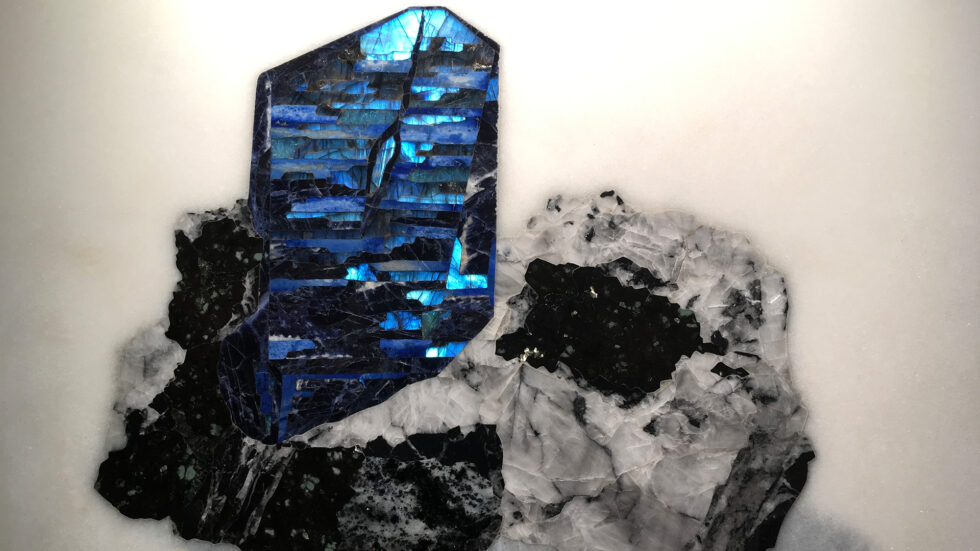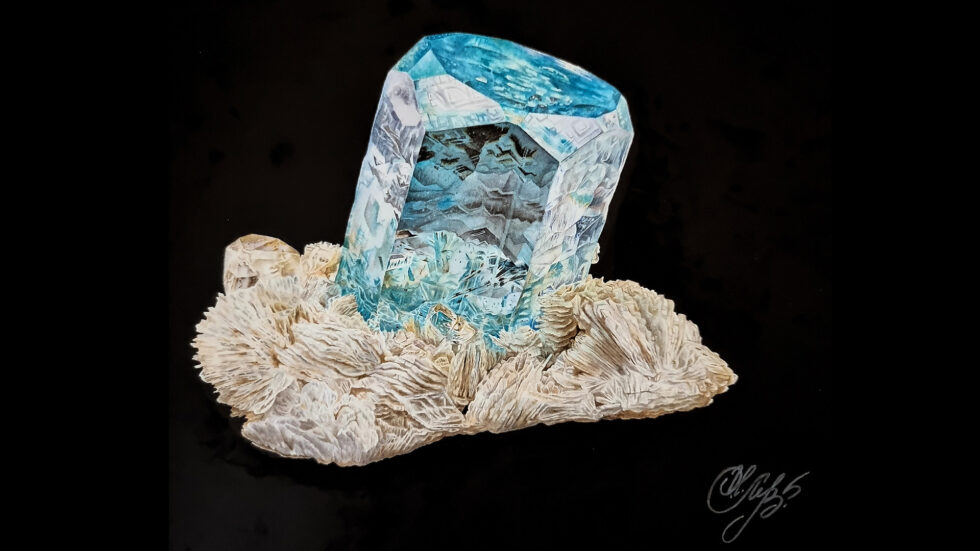
Update: Special Exhibition “Art d’objet – a history of mineral drawing”
Jun 7, 2023
Since the dawn of humankind, we have had a special connection with stones. Evidence now suggests that even our ancestors fashioned crude stone tools a half million years before the genus Homo came on the scene, and that relationship has deepened such that human existence as it now would be unthinkable without minerals. However, early humans not only saw the utility of rocks and minerals, but also appreciated their beauty. Like crows, ravens and magpies, humans are also attracted to shiny, sparkly things.
At some point about 30,000 years ago, humans exercised their creativity again to satisfy a need to document their observations or events and gave birth to something uniquely human: art.
Both, human interest in minerals and art, evolved over time. During the Renaissance and the Age of Enlightenment, art and science flourished; curiosity cabinets, which commonly included mineral specimens, became popular. Of course, this interest in learning about and admiring the beauty of natural objects also required documentation.
Conrad Gessner (1516-1565), a Swiss naturalist and physician, published “Historia animalium” in the mid-16th century. Although primarily focused on animals, this influential book included hand-colored illustrations of various minerals and gemstones, providing one of the earliest instances of colored depictions of minerals.
In the following centuries, scientific exploration and classification of minerals gained momentum as did a simultaneous appreciation of the mineral world’s intrinsic artistic qualities. Not only did mineralogists and naturalists gain much knowledge in terms of their chemical and physical properties, collectors and connoisseurs recognized the exquisite beauty found in their natural forms and colors of minerals. Today, many collectors acquire minerals specimens almost purely as natural objéts d’art.
The depiction of minerals in art has also evolved. The artistic skill required to produce effective documentation can be appreciated, such as some of the color plates in early books, which have even gained status as a collectable in their own right. As materials and skills were developed, so did the quality level of mineral art, so that in the last half century, there exists a body of work that has been created not merely to illustrate, but to stand on its own. And beyond the hyper-realism, minerals are now featured in pieces that can only be described as art inspired by minerals, truly the product of an artist’s creative mind and hand.
Mineral art is part of the culture of minerals: the interaction of humans with minerals.
The Art of Minerals exhibit at the Munich Show is an opportunity for the viewer to immerse him or herself and truly experience this culture. Fabulous works created by artists are paired alongside the natural wonders that inspired them. Beginning with historic specimens and the rare original books in which they are illustrated (including the tourmaline given to Lieutenant-Colonel Michael Symes by the King of Ava in 1795 and its illustration in Sowerby’s Exotic Mineralogy (plate 89, Sowerby 1812), the exhibit leads into a central gallery that features modern works by masters such as Eberhard Equit, Hildegard Königshofer, Gamini Ratnavira, Fred Wilda and Wendell Wilson, as well as by rising stars Ksenia Levterova, Tama Higuchi, Stefanie Berens and Chris Smith-Duque. The final section of the special exhibit features fine examples of art that is inspired by minerals.


